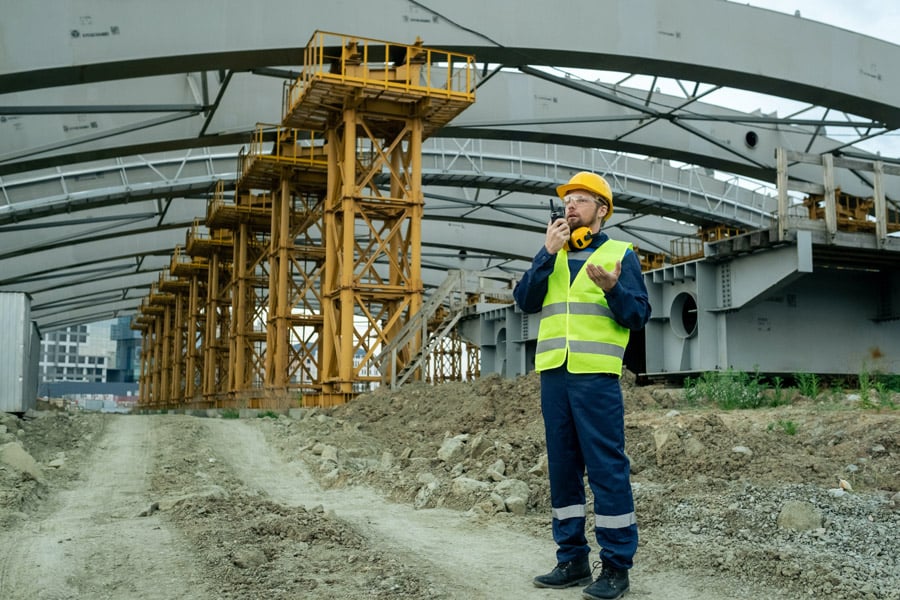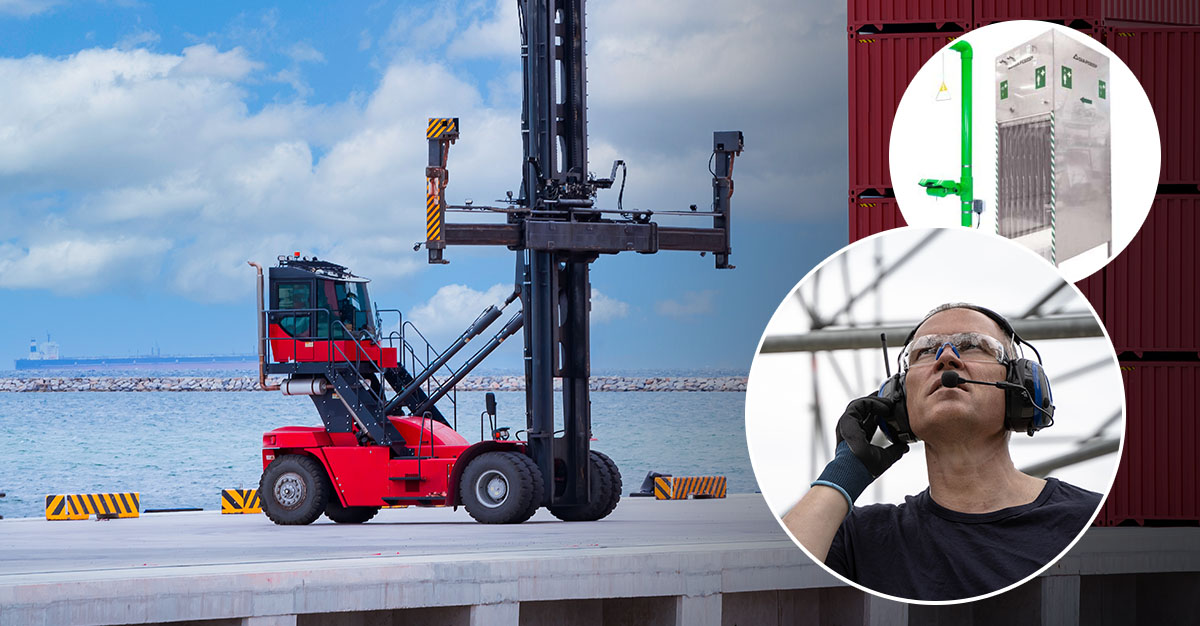Table of Contents
Self-contained emergency showers represent a critical component in ensuring the safety of workers in various environments, particularly those that are remote or lack access to regular water systems. This article will delve into the importance of these systems, how they function, and why they are an indispensable part of workplace safety.
Understanding self-contained emergency showers
Self-contained emergency showers are stand-alone units that do not require a connection to a fixed water supply. Unlike standard emergency showers that need to be connected to a consistent source of potable water, self-contained units are equipped with their own water tank, allowing them to be deployed in locations where water access is limited or non-existent. This autonomous feature makes them particularly suitable for outdoor work environments, remote locations, and sites undergoing construction or maintenance where conventional water systems are not yet established.
These mobile showers are essential in various work environments
Self-contained emergency showers are essential in various outdoor and remote work environments. These include construction sites, mining operations, oil and gas exploration areas, agricultural fields, and any location where hazardous chemicals or materials are handled and there is a risk of exposure or contamination. In these scenarios, immediate decontamination is crucial to mitigate injury. Read more
Self contained emergency showers offers fast protection against hazardous exposures
These emergency showers are designed to offer immediate decontamination for individuals who have been exposed to a wide range of hazardous materials. This includes but is not limited to:
- Corrosive chemicals such as acids and bases
- Toxic substances including pesticides and herbicides
- Flammable or combustible materials
- Irritants and sensitizers like solvents and resins
- Biological hazards that can cause infection or disease
Operational procedure in emergencies
In the event of an emergency, the operation of a self-contained emergency shower is straightforward yet immediate action is imperative:
- Quickly approach the unit. Time is of the essence when chemical exposure occurs.
- Activate the shower by pulling the lever or pushing the handle, depending on the design.
- Step into the shower, ensuring complete coverage by the water to dilute and wash away hazardous substances.
- Remain under the flow for no less than 15 minutes, as this duration is critical for effective decontamination.
Quality testing and certification
The quality and reliability of self-contained emergency showers are upheld by strict standards and certifications. These may vary by country but generally include:
- In the United States, compliance with ANSI Z358.1 is required, which specifies guidelines for performance, use, maintenance, and inspection.
- The European Union adheres to EN 15154 standards, covering both plumbed-in and self-contained emergency showers.
- In Australia, the relevant standard is AS 4775, which is similar to the ANSI standard.
- Canadian standards are outlined in CSA Z358.1, which aligns closely with its American counterpart.
Optimal temperature is crucial
The optimal temperature for water in emergency showers should be tepid, generally between 60°F and 100°F (16°C and 38°C). This range is crucial to avoid thermal shock and to ensure that a person exposed to hazardous materials can tolerate the necessary 15-minute decontamination process without the risk of hypothermia or scalding.
Preventing freezing in self contained emergency showers
Maintaining the operational status of emergency showers in cold environments is a complex challenge, one that requires a multifaceted approach to ensure that the water within these lifesaving devices does not freeze. The consequences of frozen emergency equipment can be dire, as it could render the shower unusable at a time when it is most needed. To address this, the industry employs various strategies to mitigate the risk of freezing.
Insulation of tanks and piping
One of the primary methods to prevent freezing is through the insulation of water tanks and associated piping. The choice of insulation material is critical and must provide effective thermal resistance even in the most extreme conditions. The insulating material must also be durable to withstand the environmental wear and tear that outdoor equipment is subjected to. Beyond the tanks and pipes, shower valves and heads also require insulation, as they are the most susceptible to freezing.
Trace heating elements
Trace heating, also known as electric heat tracing, involves running heating cables alongside the piping of the emergency shower. When temperatures drop, these cables activate, delivering a consistent and controlled amount of heat to prevent water from freezing within the pipes. This system is often coupled with thermostatic controls that can detect the ambient temperature and adjust the heat output accordingly, ensuring energy efficiency and constant protection against freezing.
Thermostatically controlled heaters
The use of thermostatically controlled heaters within the water tank itself is another effective method. These heaters maintain the water at a constant temperature, which is set above the freezing point but below a temperature that could cause scalding. The thermostats monitor the water temperature continuously and activate the heating element when the temperature drops to a preset threshold, ensuring that the water remains in a liquid state ready for immediate use.

Safety recommendations for industry professionals
Safety within the workplace, particularly in industries where hazardous materials are present, demands rigorous and proactive measures. Emergency showers are a fundamental part of this safety infrastructure, and their efficacy is contingent upon the adherence to a set of thorough recommendations aimed at ensuring both their functionality and the preparedness of the workforce to utilize them effectively.
Regular inspection and maintenance
The integrity of self-contained emergency showers can only be guaranteed through a regular and detailed inspection regimen. This encompasses a comprehensive review of the water supply, checking for any contaminants or obstructions that could impede the flow of water. Inspections should also include a functional test of the activation mechanism, ensuring it operates smoothly and without delay. Additionally, checking for leaks, corrosion, and wear and tear on all parts of the unit is essential, with prompt repairs or replacements being crucial to maintain operational readiness.
Comprehensive training programs
Knowledge is the first line of defense in any emergency. Workers must be thoroughly trained not just on the locations of the emergency showers within their vicinity, but also on their proper use. This training should include the correct way to activate the shower and the importance of the recommended duration under the water flow. Training must also cover the types of contaminants and exposures that necessitate the use of an emergency shower, reinforcing the gravity of using the equipment in a timely manner.
Emergency drills
Similar to fire drills, conducting regular emergency response drills that include the use of emergency showers is vital. These drills should simulate real-life scenarios to ensure that workers can respond swiftly and correctly in an actual emergency. The drills should assess and improve the speed of response, the effectiveness of communication during an emergency, and the adequacy of the follow-up medical intervention if needed.
Accessibility and use of personal protective equipment (PPE)
PPE is a critical layer of protection in any hazardous work environment. It is imperative that such equipment is not only available but also easily accessible in areas of potential exposure. Workers should be trained on the correct use of PPE, which includes understanding the limitations and the specific protections offered by each type of gear. Regular checks should be in place to ensure that all PPE meets the safety standards and is in good condition.
Implementation of a buddy system
The buddy system is a strategic approach to safety, ensuring that no worker is left alone while handling hazardous substances. This system ensures that in the event of an exposure or accident, assistance is immediately available. The buddy is responsible for activating the emergency shower, helping the affected worker if they are incapacitated, and alerting emergency response teams. This system adds a layer of safety by ensuring rapid response and that critical steps are not overlooked in the chaos that can ensue following an accident.
Key takeaways about self contained emergency showers
Self-contained emergency showers are a vital safety measure for a multitude of industries. They not only provide a solution where traditional water supply is unavailable but also ensure that workers can receive immediate decontamination after exposure to hazardous substances, thus minimizing injury and potential health risks. By adhering to strict quality standards and maintaining operational readiness, these emergency systems underscore a commitment to workplace safety and worker welfare.
If you are interested in purchasing a self contained emergency shower, or any other emergency shower you can visit GIA Premix by this link: https://giapremix.fi/hatasuihkut/. They are a well renown Swedish and Finnish emergency shower company with over 30 years of experience in the field.





